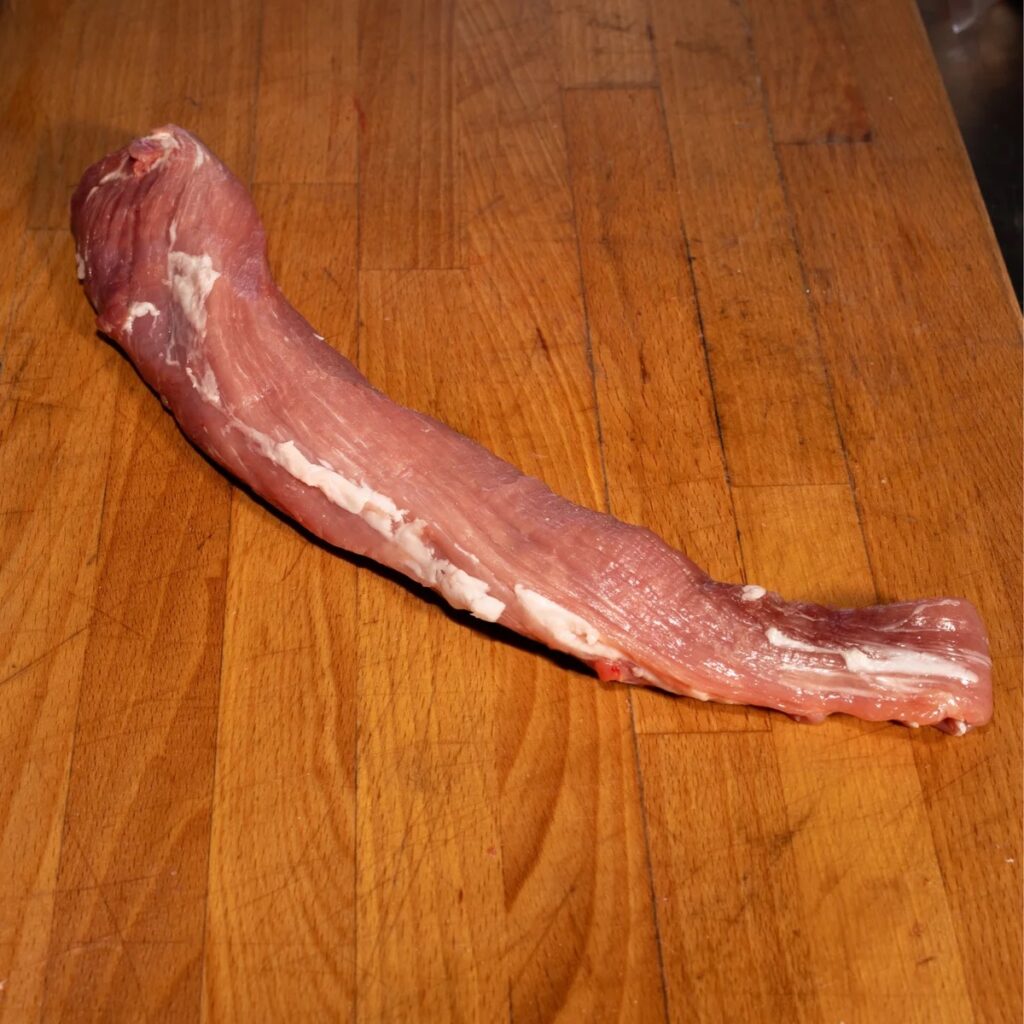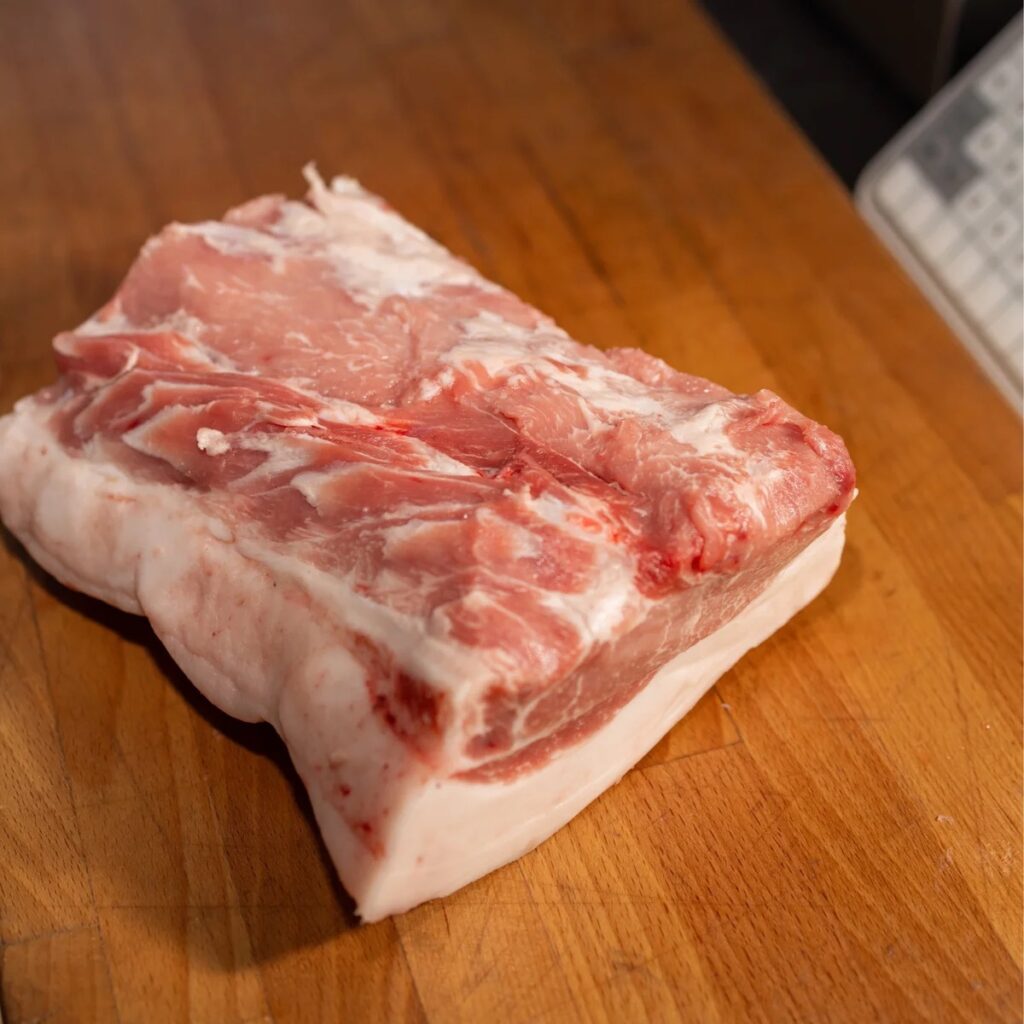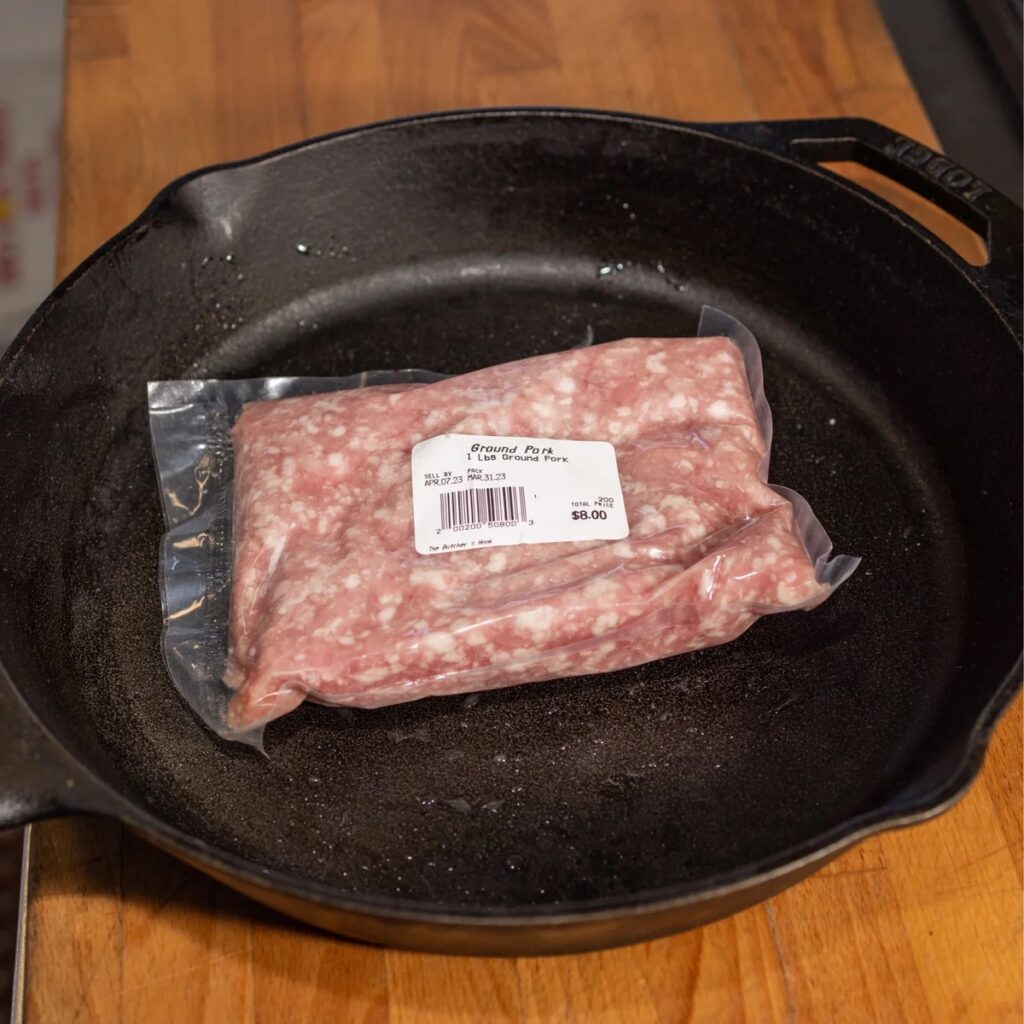Pork cuts – the best kind of meat, bar none! Whether you’re sizzlin’ it up on the grill or slow-cooking it to perfection in the oven, pork is a versatile and delicious option for any meal.
But when it comes to pork cuts, it can be a little tricky to know what’s what. Should you opt for a tenderloin or a pork belly? How about jowls, chops, and roasts? Choosing the right pork cuts requires a bit of knowledge, but we’ve got you covered.
In this guide to pork cuts, we’ll explain the different types of cuts available and how to best prepare each one. And when in doubt, trust the team here at The Butcher’s Hook in Evergreen, CO to help you out.
Different Kinds of Pork Cuts
There are various pork cuts to know, all with their unique characteristics. Some cuts offer leaner meat, while others provide juicy, tender pieces for succulent dishes. Let’s break down each cut in particular – and look at each one’s best uses.

1. Tenderloin
Ah, the tenderloin – the leanest cut of pork available. It’s an incredibly versatile cut that can be cooked in a variety of ways, from roasting and braising to grilling and sautéing. Plus, it takes on the flavor of whatever herbs and spices you use. The tenderloin is found along the pig’s back, near the hipbone.

2. Loin Roast
A loin roast is a succulent cut of pork that comes from the pig’s back region. It can be roasted, grilled, pan-fried, or slow-cooked to create an incredibly tasty main course. And with its natural marbling of fat and flavorful juices, it’s sure to please even the pickiest of eaters.
3. Pork Belly
With its generous amount of fat marbling, a pork belly is excellent for slow cooking or roasting. Its rich flavor and juicy meat make it ideal for preparing dishes such as bacon, carnitas, and pulled pork sandwiches. While the name may throw you off, pork belly is actually quite lean.
4. Chops
These classic cuts of meat are cut from the shoulder and rib area of the pig. You’ll generally find two to three bones in each chop. Chops are great for grilling, pan-frying, or baking. Just make sure you cook them quickly and over high heat to avoid drying out the meat.
5. Spare Ribs
Spare ribs are cut from the lower portion of the pig’s rib cage and come with more fat marbling than other cuts. They’re ideal for slow cooking, grilling, or smoking and are usually served with a side of BBQ sauce. Just make sure to cook them low and slow to get that signature melt-in-your-mouth texture.
6. Shoulder
The pork shoulder is cut from the front part of the pig’s shoulder and is one of the most popular cuts for making pulled pork. This cut makes for a great roasting joint, and it’s also great for slow cooking or braising. The fat marbling makes it moist and juicy when cooked low and slow over several hours.
7. Leg (Ham)
The leg of pork is one of the largest cuts available and is often smoked or cured for use in classic dishes like ham, prosciutto, and even bacon. It’s also ideal for roasting with other vegetables to create a hearty main course. While it can be cooked quickly over high heat, slow cooking will really bring out its sweet flavor.

8. Ground Pork
We couldn’t leave out ground pork! This versatile cut is perfect for making sausages, burgers, and Asian-inspired dishes like dumplings or stir fry. Just make sure to cook it before eating, as it can carry harmful bacteria if not cooked properly.
Ground pork contains all the flavors of the pig but with a finer texture that’s great for absorbing other seasonings. Plus, it’s much easier to cook than larger cuts like shoulder or neck!
Tips for Choosing the Right Pork Cuts
As you can see, there are many different cuts of pork available, but how do you know which one is best for your dish? Here are some tips to help you select the perfect cut:
1. Consider the recipe.
Different dishes require different ways of cooking and types of pork. For example, if you’re making a stew or soup, shoulder or leg would be your best option as they stand up to long cooking times, whereas ground pork is better for quick-cooking dishes.
2. Don’t be scared of fat!
Pork fat is what makes the meat so full of flavor and keeps it moist while cooking. Be sure to choose cuts with marbling or fat on them, as this will add more flavor to the dish. In general, the darker the meat, the more fat it will have.
3. Don’t forget about texture.
Some cuts of pork are better for dishes that require a firmer texture, like chops or steaks, while others are best for dishes that need to be slow-cooked and will break down over time, like shoulder or leg.
4. Look for quality meat.
When selecting your pork, make sure to look for pink meat with a nice marbling of fat. If the cut you’re looking at seems too pale or too fatty, it’s not ideal for cooking. When in doubt, ask your butcher for advice.
5. Get creative.
Don’t be afraid to experiment with different cuts and recipes. There are so many delicious ways to cook pork, from roasting to barbecuing. And with the different cuts, you’ll find that there are a variety of flavors and textures to explore.
Shop The Best Pork Cuts at The Butcher’s Hook
Pork is a versatile and delicious ingredient; finding the proper cut is critical to making a great dish. But when it comes to choosing the best pork for your next dish, you don’t want to cut corners.
That’s why The Butcher’s Hook offers the best quality pork cuts you can find. Whether it’s a juicy chop or some succulent ground pork, we have what you need to make your next meal memorable.
With our selection of choice cuts and expert preparation, you’ll always be able to make something unforgettable. Shop now and see why The Butcher’s Hook is the go-to destination for the best pork cuts. Stop by our Evergreen butcher shop and learn why we are the top choice for discerning cooks looking for the best pork, chicken, and other meat cuts.
